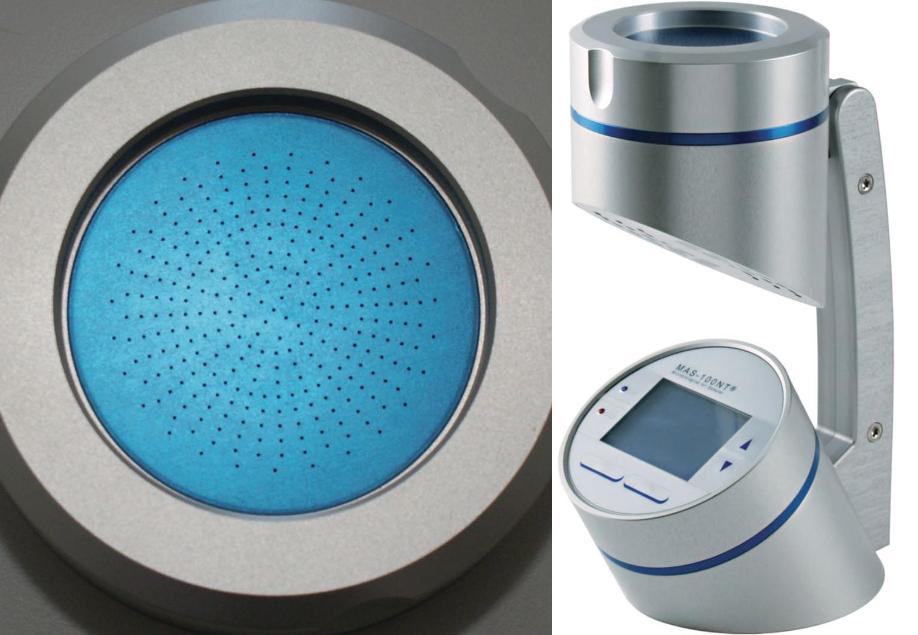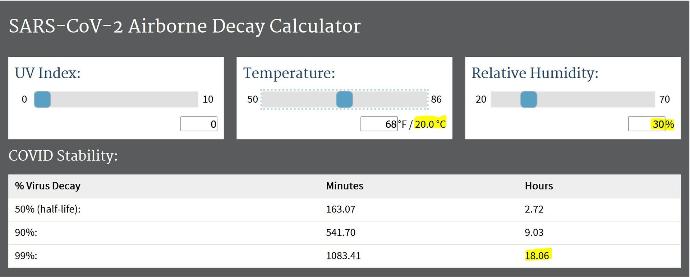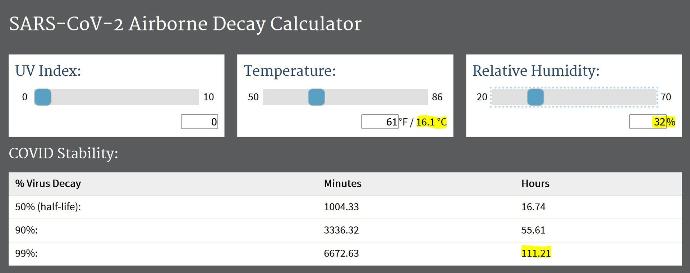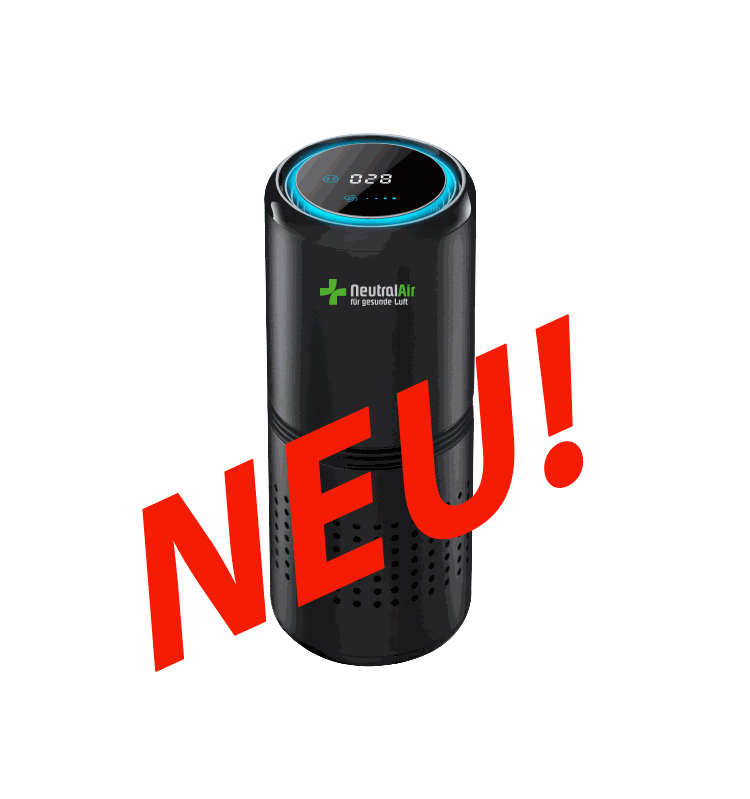Survival time of Sars-Cov-19 viruses
in the air
What can I do about it?
Survival time of corona viruses in the air
(on aerosols)
Covid virus survives much longer at low temperatures. Therefore, proper ventilation or the addition of a UV-C air purifier is very important.
In rooms with 20°C and 30% humidity
The source of the graphic is US Homeland Security.
In rooms with 16°C and 32% humidity
How long does it take to get infected with Corona?
A normal, average immune system can stay in a room with a high viral load for about 15 minutes. A very good immune system can manage with a higher viral load and can therefore stay a little longer in a room with a high viral load.
The opposite is the case if the own immune system is not very well developed or is even very low due to an immune deficiency disease. These persons should in no case be in rooms without at least an FFP2 mask, where there is a lot of traffic or change of persons.
How can I make a room safer?
What do I need to know about UV-C air purifiers?
But then the air is sterile?
No, in no case. It also does not harm the strengthening of the immune system!
A child in school or kindergarten, daycare is still exposed to enough germs that help build the immune system. In addition, they are also outdoors during recess, which is teeming with germs. As soon as it touches objects (table, toy, colored pencil or pen...) it is exposed to germs. This does not change.
But I can ventilate!
So, if you have an average immune system, you should ventilate 3-4 times an hour. It is not enough just to open the windows so that the Co2 value drops again, but it must be ventilated so that the air content is exchanged; only in this way is the germ load removed from the room.
CO2 meters
How do I detect the virus load?
Air sampler MAS-100-NT
These air samplers can be used to collect viruses and bacteria in the air.
This example is a MAS-100-NT air sampler and is available from us from 7'651 CHF excl. VAT.

Autor: Claude Haltiner
Calculator Source: US Homeland Security







